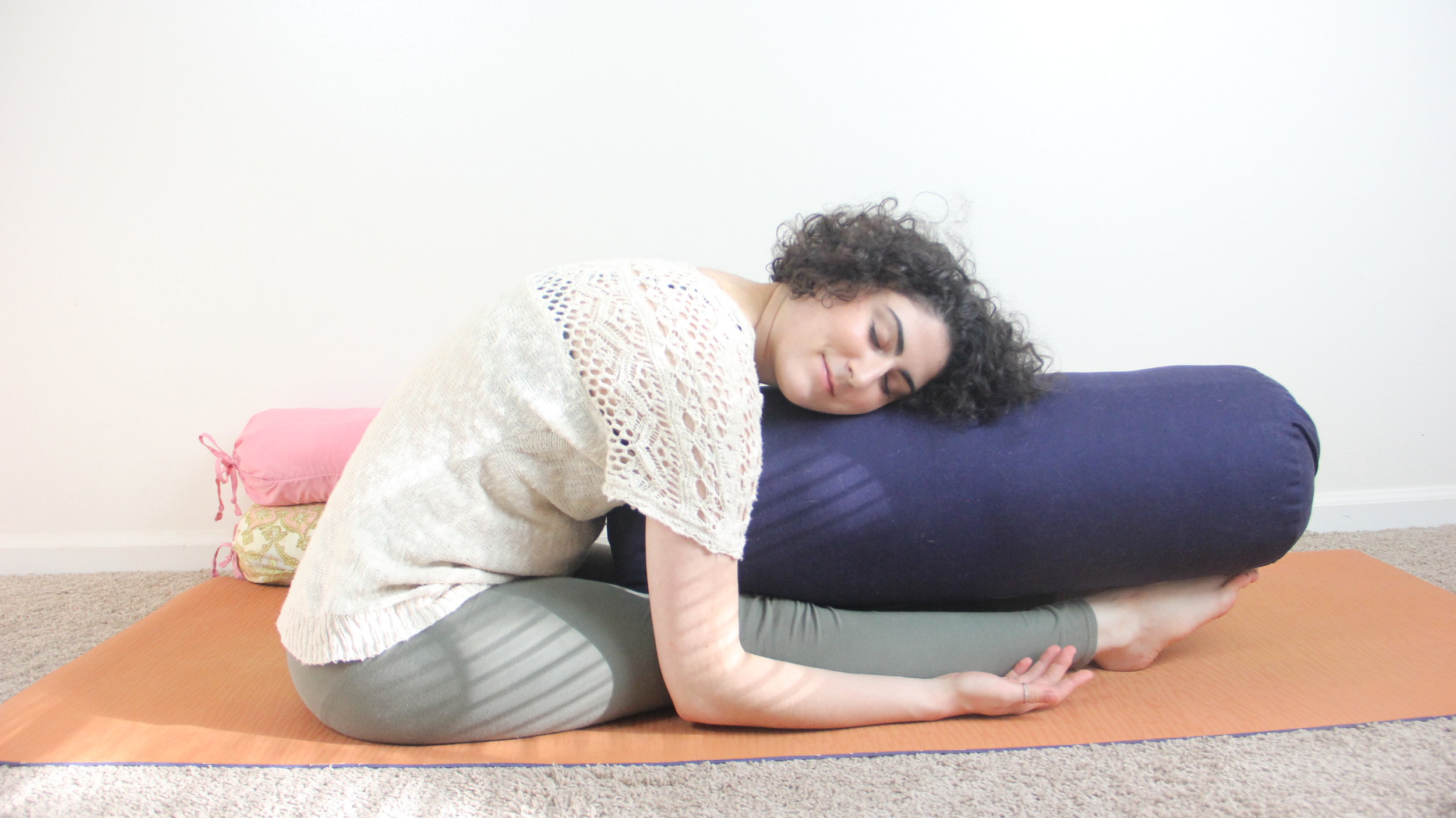Am I Doing It Right? || How to Start Yoga for Chronic Illness
I find that many chronic illness warriors are also chronic overachievers, over-doers, and perfectionists who are much too hard on themselves. Sometimes the fear of doing something wrong is paralyzing, keeping us from even trying at all. If I can't do it perfectly, what's the point of doing it? This type of all-or-nothing thinking blocks creativity and robs us of experiences that have the potential to bring us a lot of joy.
I've found that the best way to overcome this roadblock is just to START. Whatever it is I want to do, I just start doing it. I give myself permission to make mistakes and learn as I go. Expecting myself to be perfect at doing something without having any prior experience is a totally ridiculous expectation. I wouldn't expect that of someone else, so why would I hold myself to that standard?
My yoga practice has helped me to relax my expetations of perfection and enjoy the journey. We call it a practice for a reason. You don't have to be perfect. You don't have to be strong or flexible. You don't even have to own a yoga mat. If you can breathe, you can practice yoga, so stop waiting for the timing to be perfect. Stop waiting for your body to be "perfect." Come as you are, and keep the following tips in mind as you get started.
LET GO OF EXPECTATIONS
Yoga is most popularly represented on social media by slim, healthy women who always seem to be handstanding on beaches or bending themselves into impressive pretzels. Meanwhile Power Yoga, Hot Yoga, and Vinyasa Yoga are quickly growing in popularity as ways to exercise and de-stress. These are amazing practices in their own right, but these physically-intense styles are not the only way to practice yoga. There are more gentle styles of yoga that may be more accessible and appropriate for people who are living with physical limitations, and these practices can still give you the results you desire.
I encourage you to let go of what you've been taught to believe your yoga practice should look like. Your yoga practice should look like YOU. You don't have to be handstanding #everydamnday in order to be practicing "real yoga." Anything done with mindful attention to how you feel in the present moment is yoga. This means that literally ANYTHING can become a yogic practice. You can practice yoga in bed or on the couch, while you're washing the dishes, while you're waiting in the checkout line at the grocery store. This practice should conform to fit you and your life, not the other way around.
START SLOW AND LISTEN TO YOUR BODY
Many of us living with chronic illness are prone to post-exertional malaise, so our goal in practicing yoga is to find a balance of activity and rest so that we can stretch and strengthen the body without unintentionally triggering a flare up of symptoms. This means paying very close attention to your body's signals. Are you holding your breath in a pose? Are you clenching your jaw? Are you feeling sharp pain? Are you suddenly feeling drained of energy? These are signs that you may need to back out of the pose and take rest.
Those of us in modern society tend to be very disconnected from our bodies, so it may take time for you to be able to read your body and understand what it needs. You may need to start out extra slow so you can get used to how your body feels and find out what it does and doesn't like. Starting with just five minutes of yoga each day or maybe even just one pose each day can help you ease into a daily yoga practice.
USE PROPS
Using support doesn't make you any less of a yogi. On the contrary, I think it proves that you are a conscious being who honors their physical vessel with care. That sort of awareness and understanding is at the core of yoga.
Props can include walls, chairs, couches, pillows, bolsters, blocks, straps, scarves, and anything else you can use to make your practice more accessible. Using props helps us achieve safe pose alignment and can suddenly transform a challenging, uncomfortable pose into total bliss.
BE CONSISTENT
When you look at the schedule of most yoga studios, you will see that most of the classes run 60-90 minutes. This can be wonderful, like a calm oasis amidst the busyness of life, but for someone living with chronic illness, this time length can be overwhelming and exhausting. It is much better to do a little bit of yoga every day than to go to yoga class for an hour once a week. Over time, you may be able to work your way up to a longer practice, but for now, devote a little time each day.
For some people, it can help to practice yoga at the same time each day so it becomes a part of their routine. For me, it helps if I schedule the time for myself. I write it down as part of my to-do list so that I remember to make it a priority every day. After awhile, I think you'll notice yourself craving your yoga practice each day. I know I do!
BE KIND TO YOURSELF
Yoga is a journey. Our bodies are different every day and even moment to moment, so don't be hard on yourself if you can't do as much today as you did yesterday or the day before. Do your best to experience the present moment without judgment or concern. As long as you stay committed to your practice, everything will work itself out.
Don't worry. You're doing it right.
Ready to get started? Click here.

